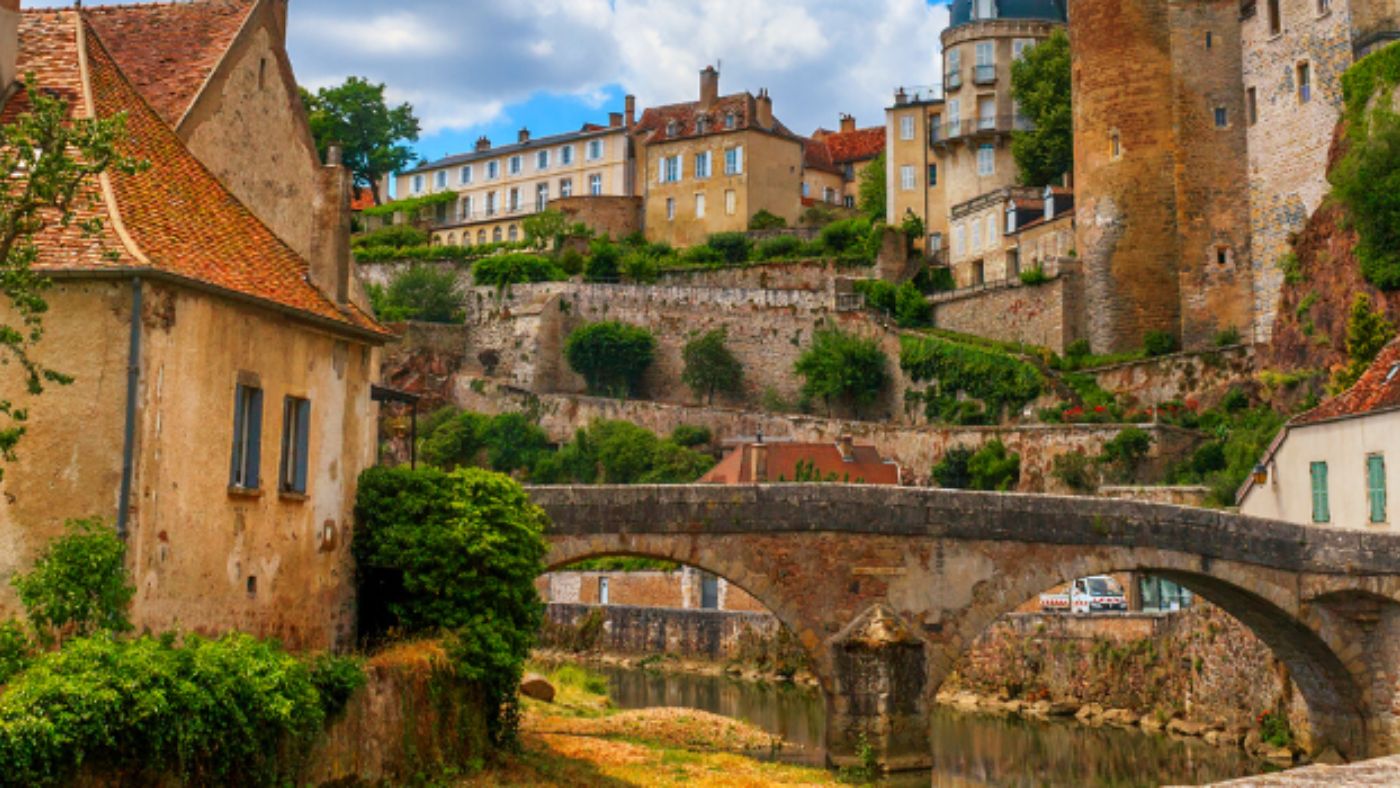If you’ve never been cycling in France, consider our 8- and 11-day bicycle tours in the country’s northeastern regions of Champagne and Burgundy. These tours combine some of the best French history, culture, and traditions that you could experience on two wheels.
If you’ve cycled in France but have yet to pedal these famous wine producing regions, you’ll be charmed by exceptional cuisine, medieval towns and villages, fascinating history and the region’s abiding love for making the finest wines on earth. Indeed, the concept of terroir, or how soil type, climate, topography and grape variety influence the taste and character of a wine, originated in France – some say in Burgundy.
But you don’t have to be a wine enthusiast to enjoy this tour. After all, you go for the cycling, right? And, it’s downright brilliant, thanks in part to all the acres upon acres upon acres of vineyards in both regions.
“Vineyards in themselves are lovely,” says Director of Tours John Giebler. “And good wine usually comes from regions with rolling hills that keep the cycling interesting and provide for scenic views.” There’s no shortage on this tour.
And wait, there’s more, our favorite parts of this tour have nothing to do with wine! Let’s start with an itinerary that features not one, not two, not three, but four(!) 2-night stays on a Level 2.5 Plus! tour (the 8-day tour has two 2-night stays). Here are seven more things we love about this tour that have nothing to do with wine. Consider it a non-wine lover’s guide to biking through Champagne and Burgundy.
1. Reims
The tour begins in Reims, where for more than 1,000 years the kings of France were coronated in the Cathédrale Notre-Dame de Reims, one of the most important examples of Gothic architecture in France and a UNESCO World Heritage site. Come early to explore the cathedral’s intricate stonework, beautiful stained glass windows and impressive sculptures and learn why Reims holds such religions and historical significance across all of France. You can also compare and contrast earlier Romanesque architecture at the Saint-Remi-Basilica, also a UNESCO World Heritage site.

2. Half-timbered Houses of Chalons-en-Champagne
We pedal to Chalons-en-Champagne on Day 3. Folks who adore Champagne will be delighted by the town’s connection to the Benedictine monk Dom Perignon who significantly advanced techniques for making champagne, while the town’s half-timbered houses, an artifact of the Middle Ages when Chalons-en-Champagne was an important trading town, will leave a lasting impression. Houses were constructed with wooden beams and braces to support the structure with gaps between filled with mud and straw. Houses were built with narrow streets and winding alleys due to the limited space available within the once fortified walls of the town and many were decorated with carvings, painted motifs, and other decorative elements.
3. Semur-en-Auxois
Semur-en-Auxois (featured in this post’s top photo) marks the tour’s arrival in Burgundy on Day 4. This small picturesque town in the Cote-d’Or department in the Bourgogne-Franche-Comté region is situated on a rocky outcrop overlooking the Armançon river. It’s a great town to walk around, take photos, grab picnic supplies, and marvel at the well-preserved medieval architecture, including its 13th-century ramparts, towers, and gates.
4. French Resistance and Morvan Nature Park
Day 5 offers a gorgeous loop ride into the lake region of Morvan Nature Park. The area served as a refuge and base of operations for Resistance fighters during World War II due to the area’s rugged terrain and remote location. Resistance fighters in the Morvan relied on the support of local residents, who provided them with food, shelter, and information about the movements of German troops. You can learn more about the area’s history at a museum located in the center of the park.

5. Castles
On Day 6 you’ll pedal from Saulieu to Sainte Sabine and experience castle after castle. The Level 3 ride features beautiful rolling hills. Toward the end of the day we go through the hilltop town of Chateâuneuf which has an impressive castle. Then you zoom down the hill to the 17th century castle where you’ll spend the night. According to John Giebler, it’s one of the best days of the tour, from the route to the scrumptious dinner prepared by an award-winning chef.
6. Burgundy Canal
Enjoy traffic-free riding for miles along the Burgundy Canal as you pedal towards Dijon. Built in the late 17th and early 18th centuries, the canal connects the Yonne River, which flows into the Seine River, with the Saone River, which flows into the Rhone River. The canal once played an important role in the economic development of the region by providing a way to transport wine, timber, and coal. Today the canal is primarily used for boating and cycling and remains an important part of the region’s cultural heritage.
7. Dijon
The capital city of Burgundy, Dijon might be more famous for its eponymous mustard than for its Burgundy wines. Jean Naigeon developed the recipe for Dijon mustard by substituting the traditional vinegar used in mustard making with “verjus,” the acidic juice of unripe grapes. This substitution gives Dijon mustard a milder, more complex flavor than traditional mustard. Verjus was commonly used in medieval and Renaissance cooking as a tart, acidic ingredient in sauces, marinades, and dressings. It was especially popular in regions where lemons and other citrus fruits were not readily available.
Join Us!
When does this tour depart next? Both the shorter and the Plus! tours depart on the same day. The Plus! tour includes three extra days of pedaling through the vineyards of Burgundy’s Côte d’Or. If you’re short on time, stick with the short tour and you’ll hit every one of our favorite experiences.


